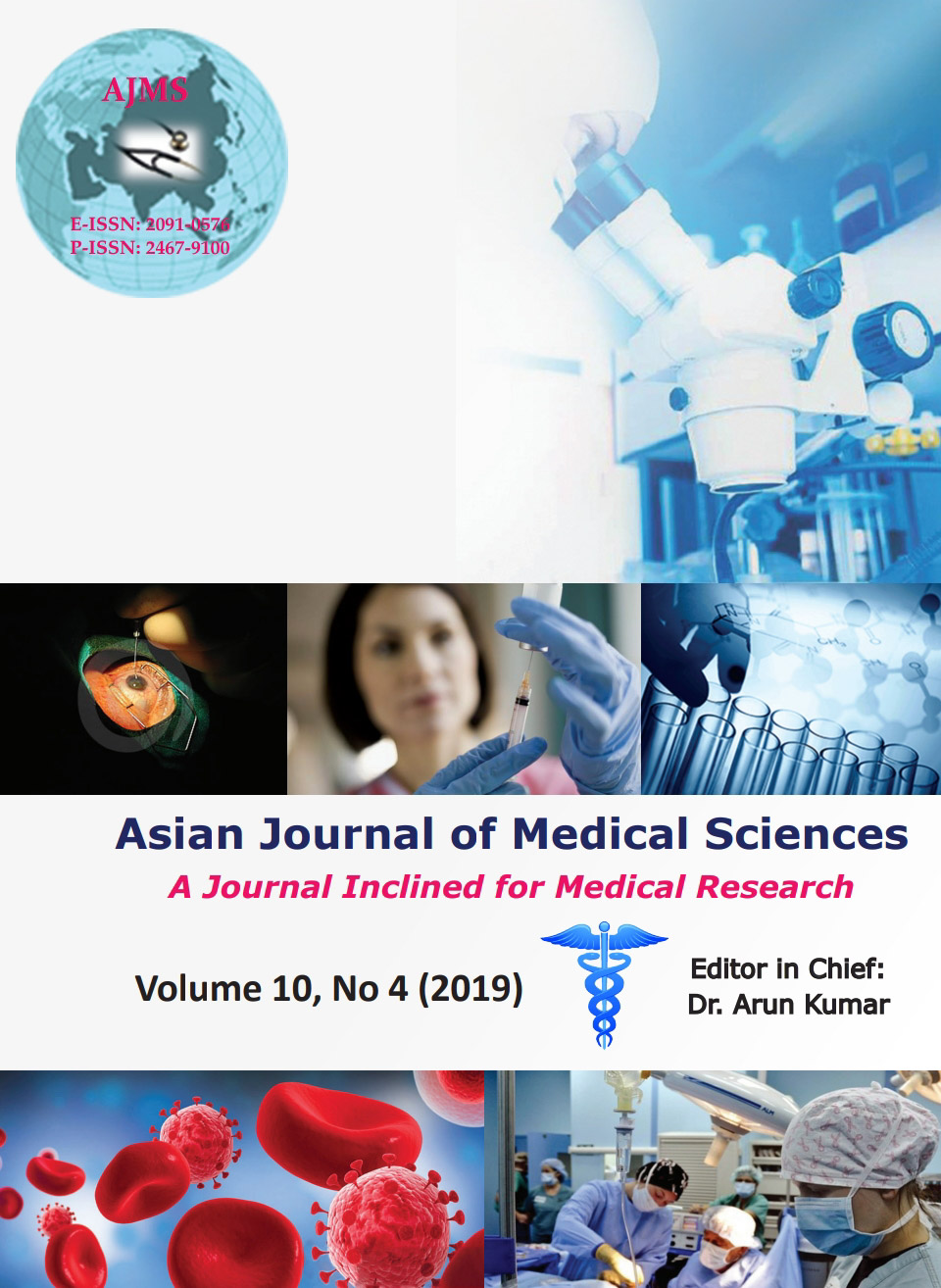Device closure of ventricular septal defect: Initial experience in Nepal
Keywords:
Amplatzer duct occluder I, Amplatzer duct occluder II, Amplatzer muscular VSD occludet occluder I, Ventricular Septal defectAbstract
Background: Device closure is an attractive alternative in the management of Ventricular Septal defect (VSD).
Aims and Objective: The aim of the study was to access the safety and early outcome of VSD device closure at Shahid Gangalal National Heart Centre, Nepal.
Materials and Methods: The study was single center, retrospective study. All the VSD cases who were attempted for VSD device closure during December 2016 to February 2019 were included. Catheterization laboratory records for VSD type and size, Device type and size were retrospectively reviewed. Hospital records were reviewed for in-hospital complications.
Results: Sixty-one VSD cases were attempted for device closure. VSD was successfully closed in 55 (90.1%) patients. The mean age of the patient was 11.1 years. Twenty-nine (52.7%) were female and 26 (47.3%) were male. Perimembranous VSD in 49 (89 %) and muscular VSD in 6 (11 %) patients. The size of VSD ranged between 2 and 12mm (Mean 5.4mm). The VSD was closed with Amplatzer duct occluder I, Amplatzer duct occluder II, Amplatzer muscular VSD occluder and Memopart PDA device in 24 (43.7%), 26 (47.3%), 4 (7.2 %) and one patient (1.8%) patients respectively. The postoperative complications were insignicant residual leak across device in 2 (3.6%) patients, mild pericardial effusion in one (1.8%) patient. None of the patient had new onset tricuspid regurgitation, aortic regurgitation and complete heart block. One patient developed Right bundle branch block, one developed Left bundle branch block, one developed Junctional rhythm. There was no mortality.
Conclusion: VSD device closure can be safe and effective if patients are selected properly.
Downloads
Downloads
Published
How to Cite
Issue
Section
License
Authors who publish with this journal agree to the following terms:
- The journal holds copyright and publishes the work under a Creative Commons CC-BY-NC license that permits use, distribution and reprduction in any medium, provided the original work is properly cited and is not used for commercial purposes. The journal should be recognised as the original publisher of this work.
- Authors are able to enter into separate, additional contractual arrangements for the non-exclusive distribution of the journal's published version of the work (e.g., post it to an institutional repository or publish it in a book), with an acknowledgement of its initial publication in this journal.
- Authors are permitted and encouraged to post their work online (e.g., in institutional repositories or on their website) prior to and during the submission process, as it can lead to productive exchanges, as well as earlier and greater citation of published work (See The Effect of Open Access).




